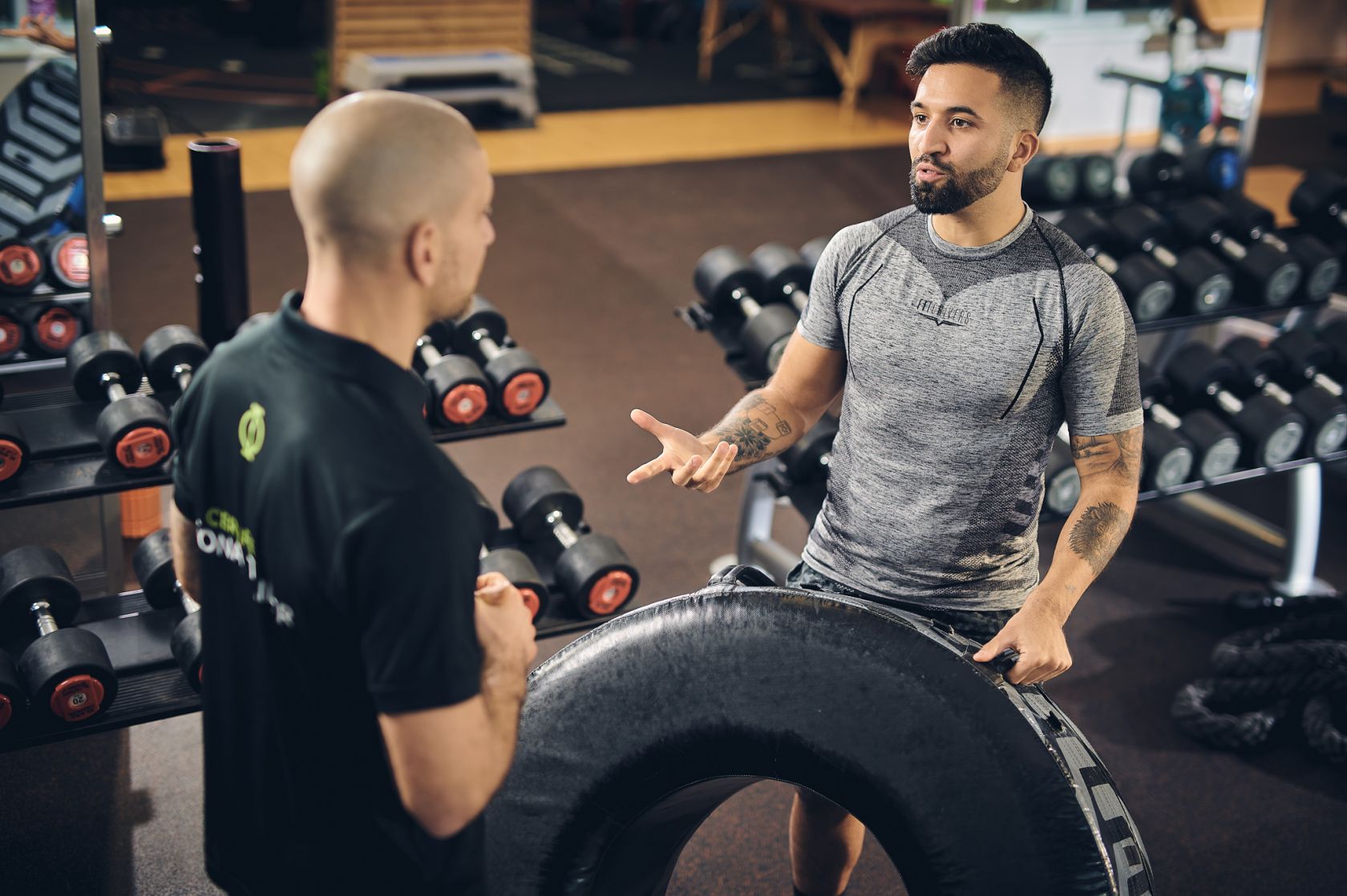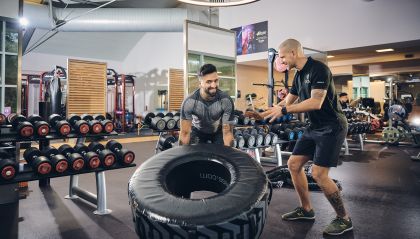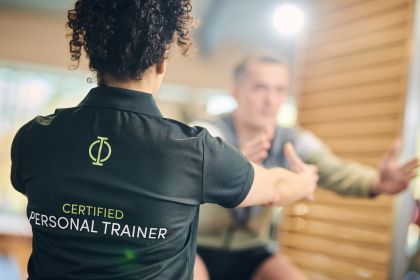There are endless tech options available when it comes to tracking intensity levels during a workout, but technology sometimes requires a learning curve, and it can be expensive.
While these products do provide tons of helpful information for trainers and clients alike, one of the simplest and cheapest equipment-free ways to test your client's intensity level during exercise is to perform a talk test.
Desribe the Talk Test
The talk test is an aerobic test that measures the client's ability to talk or hold a conversation during any activity at various intensity levels. How well (or not) the client can hold a conversation can give us valuable information about how hard the client is working.
Performing the test is quite simple. While your client is performing their preferred mode of exercise, you can ask them a question that will require an answer in full sentences or have them recite something standard like the Pledge of Allegiance if they're not very chatty.
Performing the test doesn't have to be a formal process, either. During personal training sessions, it's natural to hold a conversation with our clients about health-related issues as well as their personal lives. Asking them a question you'd normally ask like, "How has nutrition been going this week?" can open an opportunity for you to listen to their response and also gauge how hard they're working at that moment.
Talk Test use case
The talk test comes in handy any time you want to quickly measure the intensity at which your client is working. Intensity refers to the level of demand placed on the body by a given activity. According to the World Health Organization (2015), adults are recommended to perform the moderate-intensity exercise for 150 minutes per week for general health. If the client wants to improve overall fitness and conditioning, it can help to do a mix of moderate-intensity and high-intensity exercise for a total of 75 minutes per week.
Here's an example of how I used the talk test during one of my sessions: I listened as my two clients chatted amongst themselves during the session. Noticing that one of my clients seemed to be having an easy time with a particular exercise, I started to pay attention to how difficult it was for her to respond to her partner.
The client that I was paying particular attention to proceeded to launch into telling a story to her partner. Her ease at telling the story told me that she was not, in fact, at the correct intensity level. Based on her speech and breathing rate, she was training at a low-intensity level, when I wanted her to be working at a moderate intensity level.
The dialogue between my clients gave me enough information to know that it was time to increase the challenge for her the next time she performed that exercise. This is an example of the talk test in its simplest form. Even though I didn't even ask my client a question, I knew that I could listen to the dialogue between my clients to easily gauge each of their intensity levels.
Another client of mine hired me to help coach her through some high-intensity intervals on an elliptical twice a week. The talk test was an easy tool that allowed me to measure her intensity level during the workouts and to gauge her recovery between bouts of work. I listened for breathlessness during the sprints, and if she was still trying to catch her breath near the end of the rest period, I knew that we might need to rest until she could talk more easily.
What are the 3 levels of the Talk Test
The talk test measures 3 levels of intensity: low, moderate, and high.
Low-Intensity: If the client can easily speak in full sentences with little to no pause for a breath, they are working at a low intensity. Think about what it sounds like to sit and chat with a friend. That's a good example of how low-intensity activity would sound.
Moderate-Intensity: When the client is working at a moderate intensity, their breathing will be more audible, but they will still be able to hold a conversation. If you've ever gone on a brisk walk with a friend, you can likely still chat, but your breathing will be more labored than just sitting and chatting.
High-Intensity: If the client can only squeak out one or two words between gasps of air, they're working at a high intensity. Think sprints or HIIT training.
What are the benefits of the Talk Test
There are many benefits to using a talk test to gauge how hard your client is working:
Cheap: No equipment required!
Easy to administer: The talk test can be administered easily and quickly. The main benefit here is that the client can keep doing what they're doing, and you can check in periodically to assess their level of intensity in a non-invasive manner.
Versatile: The talk test can be done during almost any activity.
Client education: The client can learn what different exertion levels feel like for them. This way, if they happen to be training alone, they can train at the proper intensity level.
Similar tests to the Talk Test
Besides the talk test, other equipment-free tests can be done to measure intensity levels. Two of these are the rate of perceived exertion method and the ventilatory threshold tests.
The rate of perceived exertion (RPE) method allows you to ask your client how hard the exercise feels for them on a scale of 1-10, 1 being very light and 10 being maximum effort. This gives you subjective information on how your client feels during the exercise, and not just their physiological response to the demand.
The ventilatory threshold (VT1 and VT2) tests are incremental tests performed on any piece of cardio equipment that gradually progresses in intensity level while using the talk test to determine when the body's metabolism undergoes a significant change (altering the percentage of carbohydrate and fat being burned as fuel when compared to being at rest). There are two levels for this test: VT1 and VT2.
- During VT1, breathing is audible and feels uncomfortable or challenging to the client. At this point, the client is using equal parts carbohydrate and fat as fuel sources, and the aerobic energy systems are working. This test is acceptable to perform with most clients.
- During VT2, you are measuring a client's capacity to sustain high-intensity work and the client will increase the intensity until they are no longer able to speak. While training in VT2, glucose is the main fuel source for the activity, and the anaerobic energy systems kick into high gear. The VT2 test is best for clients with performance goals who have good core and postural control.
Bottom line
If you need an easy, quick, and inexpensive way to measure how hard your client is working during their session, the talk test is a great tool to have in your back pocket.
References
Sutton, B. G. (2021). Nasm Essentials of Personal Fitness Training. Jones & Bartlett Learning. World Health Organization. (2015). Physical activity and adults.



